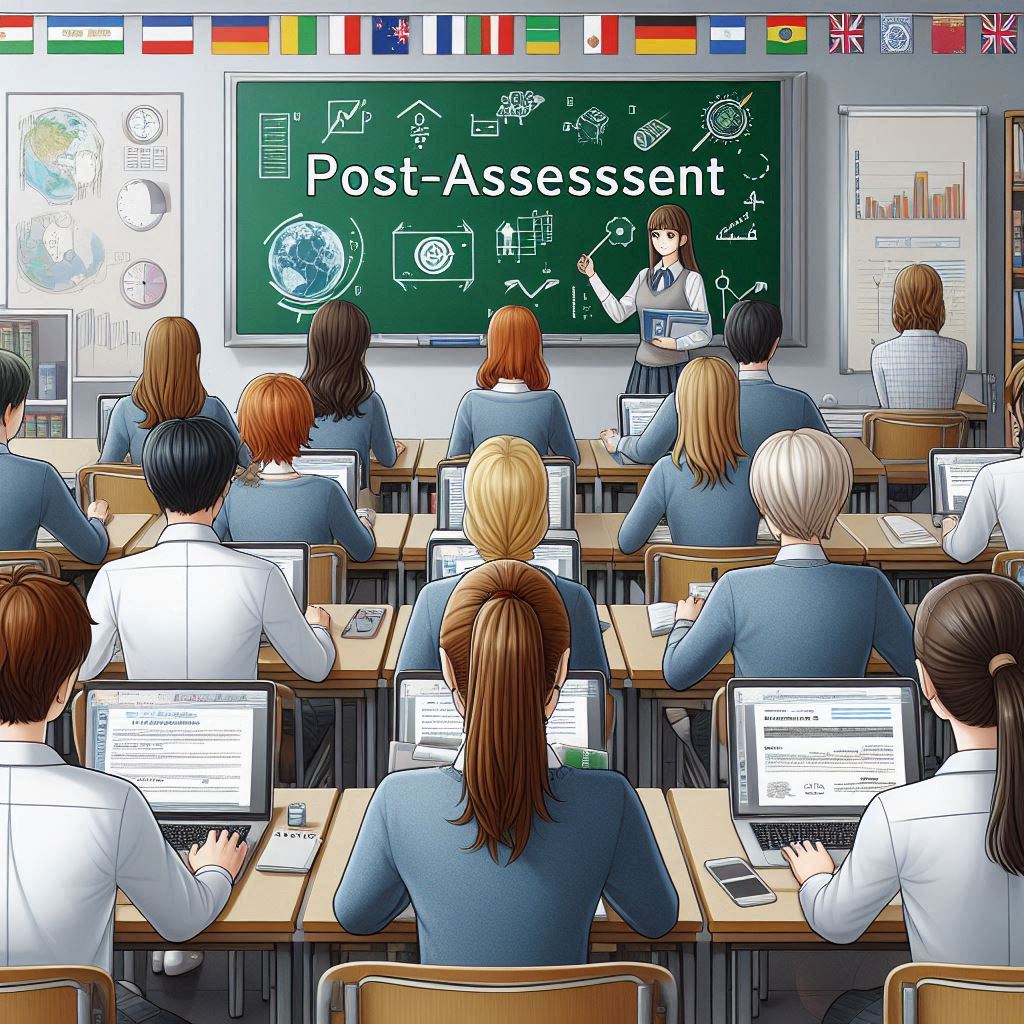
Planning for Post-Assessments: So… What Did They Learn?
“It’s Not What We Teach; It’s What They Learn” – Alfie Kohn
Wondering what students have learned in the lesson you’ve just delivered? Have students met the outcomes you set at the beginning of the lesson? How have they represented the knowledge, skills or attitudes that you are measuring through your course and unit learning outcomes? This post will provide a short explanation as to why post-assessments are important in lesson planning and examples you can try with your students.
What is a Post-Assessment and Why do we use it?
According to the BOPPPS model in lesson planning, the post-assessment task formally or informally answers the question: “What did the student learn? and Were the desired outcome(s) of the lesson accomplished?” (ISW Network, 2021).
Post-Assessments are included in lesson planning for several reasons, including:
- Evaluation of Student Learning Outcomes: Post-assessments provide concrete data on student performance, indicating areas where students excel or struggle. They help measure if learning outcomes are achieved and how well students have grasped the material taught during the lesson.
- Teacher Feedback & Planning: Upon reviewing student results of the post-assessment, faculty can identify if students have understood the material. Post-assessment data can guide the development of future courses or lessons by revealing which concepts were most challenging for students. Faculty can consider concepts that may need revision, or use of different approaches in future iterations of the course/lesson.
- Student Feedback & Comprehension Checks: The results of post-assessments offer valuable feedback for students to recognize their strengths and areas of improvement. A quick, anonymous zoom poll or mentimeter quiz can show student responses and reveal key learning areas.
- Student Engagement & Accountability: Knowing they will be assessed at the end of a lesson can motivate students to engage more deeply with the material throughout the learning process. This can lead to improved retention and understanding of the content as well as a sense of accountability and reflection.
- Support Research and Development: Post-assessments can contribute to educational research and the development of best practices in teaching. They provide a rich source of data for analyzing the impact of various instructional methods and tools.
Examples of Post-Assessment Alignment to Learning Outcomes:
Post-assessment activities should be aligned directly with the learning outcomes, pre-assessment and the activities that you set/create for the lesson. Note that if the learning outcomes are in the lower order thinking of Blooms Taxonomy, the post-assessment should also be in the area of lower order thinking.
Here are a few examples:
| Learning Outcome | Post-Assessment Ideas |
| Welding: Students will identify different types of welding joints such as butt, corner, lap and T joints. | Students are given a handout where they need to match or label the images of the different joints. A Mentimeter is created showing one joint image at a time and students need to choose the correct multiple-choice option. |
| PSW: Students will demonstrate proper techniques for assisting patients with mobility challenges, including safe transfer and positioning methods. | Students complete a practical skills assessment where they will be paired up and asked to perform a patient mobility assistance task (e.g. transferring a patient from a bed to a wheelchair, repositioning a patient in bed to prevent bedsores.) Faculty and student pairs will use a checklist to evaluate criteria such as safety, accuracy of technique, and communication with the patient. Checklists will be shared with the student for review/reflection. |
| Film Studies: Students will describe a film’s use of a specific cinematic technique and its impact on the narrative or theme. | Faculty will show students a short, specific scene from a film studied in class. Students will write a brief paragraph (e.g. one minute paper) describing one cinematic technique used in the scene (such as lighting, camera angles, editing, sound) and how it contributes to the film’s narrative or theme. |
Further Examples of Post-Assessments
- Exit Ticket: Post a problem, question or prompt on the board or in the slides and have students write in the chat, on a sticky note or Mentimeter (open answer) response.
- Muddiest Point: Students jot down the concept or topic they found most confusing, which helps faculty identify areas that need clarification.
- Concept Map/Brainstorm: Students work on their own or in a group and write down everything they learned about a topic. They can also connect key ideas.
- Think-Pair-Share: Students take a moment to think about a question, discuss their thoughts with a partner, and then share with the class or submit their conclusions.
- Polls and Quizzes: Using digital platforms like Zoom or Mentimeter, faculty can quickly assess students’ knowledge with real-time results.
- Two Stars and a Wish: Students list two things they understood well and one aspect they wish to learn more about.
- KWL: This is a graphic organizer that is separated into three categories: What I know (K), What I want to know (W) and what I learned (L). The last category would be considered a post-assessment.
- Observations/Checklists: Students complete practical demonstrations performing a task or set of tasks to show their competency in a particular skill. Faculty and students can use a checklist to prepare for and/or during the presentation. For example, a safety compliance check.
- Peer Assessments: Classmates can evaluate each other’s work on projects or presentations, providing feedback. They could use a marking scheme, checklist or rubric.
- One Minute Paper: Students write one sentence or short paragraph to summarize what they know/learned about a topic/concept.
- 3-2-1: Students list 3 things they learned about the topic, 2 things they would like to know and 1 question they have about the topic.
References:
BOPPPS Lesson Planning Poster: https://tlconestoga.ca/downloads/
Edutopia. (n.d.). Powerful closure activities. https://www.edutopia.org/blog/22-powerful-closure-activities-todd-finley
Instructional Skills Workshop. (2021). ISW handbook. https://www.iswnetwork.ca/login/my-resources/
Paulson, E. (2023). Comprehension Checks. https://tlconestoga.ca/comprehension-checks/
Teacher ToolKit: https://www.theteachertoolkit.com/index.php/tool/all-tools
Vanthuyne, A. (2023). Make your lessons bloom: leveraging bloom’s taxonomy for lesson planning alignment. https://tlconestoga.ca/make-your-lessons-bloom-leveraging-blooms-taxonomy-for-lesson-planning-alignment/
Vanthuyne, A. (2024). Pre-Assessments in Lesson Planning. https://tlconestoga.ca/pre-assessments-in-lesson-planning/
University of Saskatchewan (2020). Instructional support: BOPPPS model post-assessment. https://libguides.usask.ca/c.php?g=696596&p=4941311






